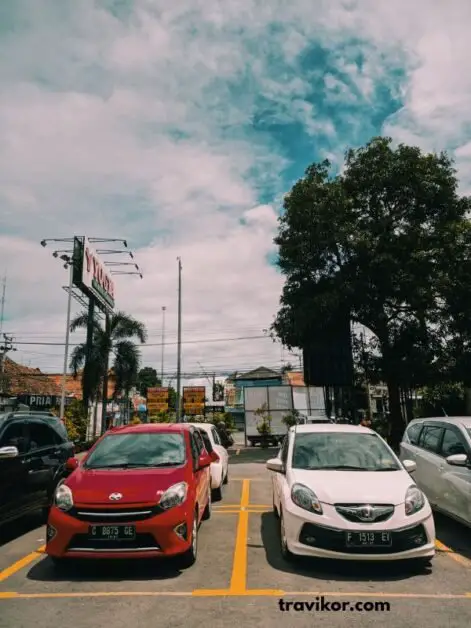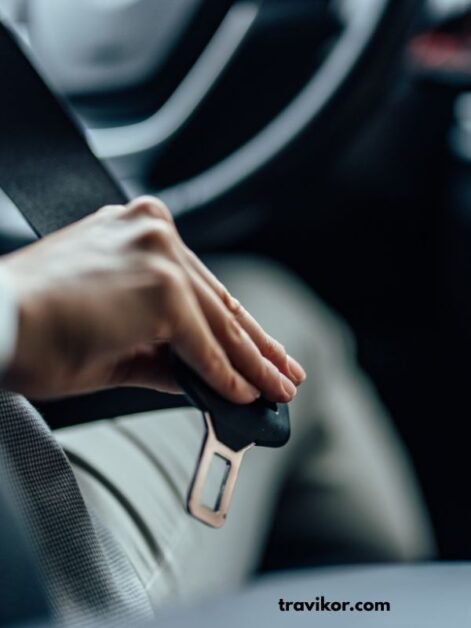17 Ultimate Guide to Road Tripping in Europe
This post shows you 17 Ultimate Guide to Road Tripping in Europe
Europe is beautiful, and it’s huge.
One of the most exciting adventures anyone can take is a road trip through Europe, because there is so much to see and do.
Europe is home to some of the world’s most iconic road trips, reason it has visitors every year round.
A trip to Europe can involve so many different kinds of experiences.
You can explore the beaches of the Mediterranean during the summer months or ski the Alps in the winter.
There are plenty of exciting cities suitable to visit year-round with amazing art and cultural events as well as unforgettable shopping and dining experiences.
I remember planning my first road trip in Europe with excitement, and a bit of nervousness.
With so many countries to check out and countless roads to ply, I wanted to make sure I got everything right and it did work for me.
That’s why I created this guide: to help you plan the ultimate road trip without the stress.
If you’re a seasoned traveler or a first-timer, this guide covers what you did to know, from planning tips to must-have essentials, so you can make the most of your European road trip.
Where To Go On A Europe Road Trip?
Europe makes road-tripping easy. The roads are good, the borders are open, and every few hours brings a whole new view. If you’re unsure where to start, these routes are some of the best places to drive through
- Amalfi Coast, Italy
- Dalmatian Coast, Croatia
- The Atlantic Road, Norway
- The Algarve, Portugal
17 Ultimate Guide to Road Tripping in Europe
1. Choose the Right Route

Europe’s beauty is unmatched, and one of the best things about a road trip is the flexibility to explore its scenic routes.
Sure, it might take a little longer, but the memories and photos are worth it
Choosing the right one depends on what you want to experience. If it’s the historic cities of Central Europe, the rugged coastline of the Mediterranean, or the charming countryside of Eastern Europe, plan your route based on your interests.
Bonus Info: Use road trip planners like Roadtrippers or Google My Maps to map out your desired stops.
2. Check Visa and Documentation Requirements

Before hitting the road, ensure you have the necessary documents, for each country you plan to visit.
It is essential to check if you need a visa based on your passport and the countries you’re visiting.
You should also carry the following documents:
- A valid passport (and visa, if required).
- An international driving permit (IDP) if your license isn’t accepted in some European countries.
- Vehicle registration and insurance papers.
Bonus Info: Double-check that all visa and document requirements, MOT, and tax are up-to-date before your trip to avoid any last-minute issues at borders or checkpoints.
3. Rent the Right Car

One of the best things about road trips is that they’re not just about the destination, it’s the journey that counts.
And ofcause you need a proper car that wont pack up half way on the trip.
If you’re not using your own vehicle, choose a rental car that suits your trip style.
A compact car is great for narrow city streets, while a camper van offers more flexibility for overnight stays.
The genuine idea of a road trip is to enjoy the ride.
Bonus Info: A fuel-efficient vehicle is ideal if you are likely to go on long distance trip, and remember to make sure it’s in top condition before setting off, with a service, tyre check, and enough storage space for luggage.
4. Pack Smart but Light

When you travel, you want to feel light and free, not weighed down with too much stuff. That’s why it’s smart to pack light
Packing for a road trip in Europe requires a balance between essentials and comfort.
By packing light you can save time, money, and hassle, and yeah, increase your overall mobility and ease of travel.
While you don’t want to overpack, you also don’t want to be unprepared for sudden weather changes.
Essential Items to Pack:
- Comfortable clothing for various weather conditions
- Toiletries and personal care products
- Snacks, reusable water bottles, and a cooler
- First aid kit and medications
- Chargers and a power bank
- Travel pillow and blanket
Bonus Info: Use packing cubes to organize your clothes efficiently.
5. Understand European Road Rules

Driving rules vary across Europe, so it’s crucial to familiarize yourself with local regulations. Some key rules include:
Driving on the right: Most European countries drive on the right, except for the UK, Ireland, Cyprus, and Malta.
HEADLIGHTS:
In some countries like Norway and Sweden, it’s mandatory to keep headlights on even during the day.
Speed limits: These can vary by country and road type. Always check the signs.
Tip: Avoid fines by researching road regulations before entering a new country.
6. Get an International Data Plan
Make sure your phone plan covers you in the countries you’re visiting to avoid crazy roaming charges, especially in non-EU countries
Staying connected is essential for navigation, communication, and emergencies.
Consider getting a SIM card with a generous data plan or using a portable Wi-Fi device.
7. Be Prepared for Tolls
Many European highways charge tolls, and it’s best to be prepared with cash and a credit card. In some countries like Switzerland and Austria, you’ll need to purchase a toll vignette to drive on highways.
8. Know Where to Park

Parking in European cities can be challenging and expensive. Look for park-and-ride options outside major cities to save money.
In rural areas, parking tends to be easier, but always respect local signs to avoid fines.
In city centres, street parking is often metered and limited, with different zones for residents and visitors.
Look out for colour-coded lines blue lines usually indicate paid parking, while yellow is typically restricted to residents. White parking zones are free unless otherwise specified.
Bonus Info Use apps like Parkopedia or Parclick to find affordable parking spots.
9. Stay Safe on the Road

We cannot emphasis on the importance of safety even in our every day live.
Safety is paramount when road tripping. Kindly, ensure you:
- Take regular breaks during long drives.
- Avoid driving at night in unfamiliar areas.
- Keep valuables out of sight when parking.
- Have emergency contacts saved on your phone.
10. Budget Wisely
Budgeting is the big one, and it can be a thing of concerns to travellers the most. It also requires the most planning.
Road trips can be more budget-friendly than other forms of travel, but costs can add up.
Set a budget for:
- Fuel
- Accommodation
- Food and dining
- Sightseeing and activities
- Miscellaneous expenses
Bonus Info: Use apps like Splitwise to track expenses if you’re traveling with friends.
11. Explore Off-the-Beaten-Path Destinations
While major cities like Paris, Rome, and Barcelona are worth visiting, don’t miss the charm of smaller towns and villages.
These hidden gems offer a more authentic experience of European culture.
12. Try Local Cuisine

One of the best parts of a Europe road trip is the food. Every country and sometimes even every town, has something different to offer.
From croissants in a small French village to fresh pasta in the heart of Italy or grilled sausages in a German roadside stand, there’s something new and delicious around every corner.
Don’t just eat at the usual tourist spots. Stop by small, family-run restaurants. Walk through local markets.
Try something from a food stall, even if you can’t pronounce the name. That’s where the real flavor is, not just in the food, but in the experience.
Bonus Tip: Always keep some snacks and water in the car for long stretches between towns, but make it a rule to taste something new at every stop.
13. Plan Rest Stops and Overnight Stays

Driving for long hours can be exhausting, we all know this already.
Adding adequate breaks into your driving itinerary is a must. Use rest stops as an opportunity to take a short nap or stretch your legs.
If you have the chance to get out of the car and get some exercise, you will most likely sleep better at night than if you stay inactive all day.
Schedule regular rest stops to stretch and recharge. For overnight stays, consider a mix of:
- Hotels
- Hostels
- Airbnb rentals
14. Learn Basic Phrases in Local Languages
While English is widely spoken in tourist areas, knowing a few basic phrases in the local language can go a long way in making your trip smoother and more enjoyable.
15. Prepare for Different Weather Conditions

Europe’s weather varies greatly depending on the season and region.
Always check the forecast in the days leading up to and during your trip and pack accordingly.
In summer, you might enjoy sunny days along the Mediterranean coast, while in winter, you could face snowy roads in the Alps.
16. Capture Your Journey

Documenting your road trip is a great way to relive memories and share them with friends and family.
It gives you the opportunity to have a secon dexperience even after you are long back to base.
You can capture your trip through photos, a travel journal, or even a blog, make sure to capture the beauty of your adventure and the awesome experience.
17. Embrace the Unexpected
No road trip goes exactly as planned, and that’s part of the adventure.
If it’s getting lost or discovering an unexpected festival, stay flexible and open to new experiences.
A road trip through Europe is more than just a journey, it’s a collection of unforgettable moments, breathtaking landscapes, and cultural experiences.
With this 17 Ultimate Guide to Road Tripping in Europe, you now have all the tools to plan a perfect adventure.
Take your time, plan carefully, and most importantly, allow for free spirit energy, you never know what hidden gems you’ll stumble upon along the way.
Europe is calling, and an epic adventure awaits.

